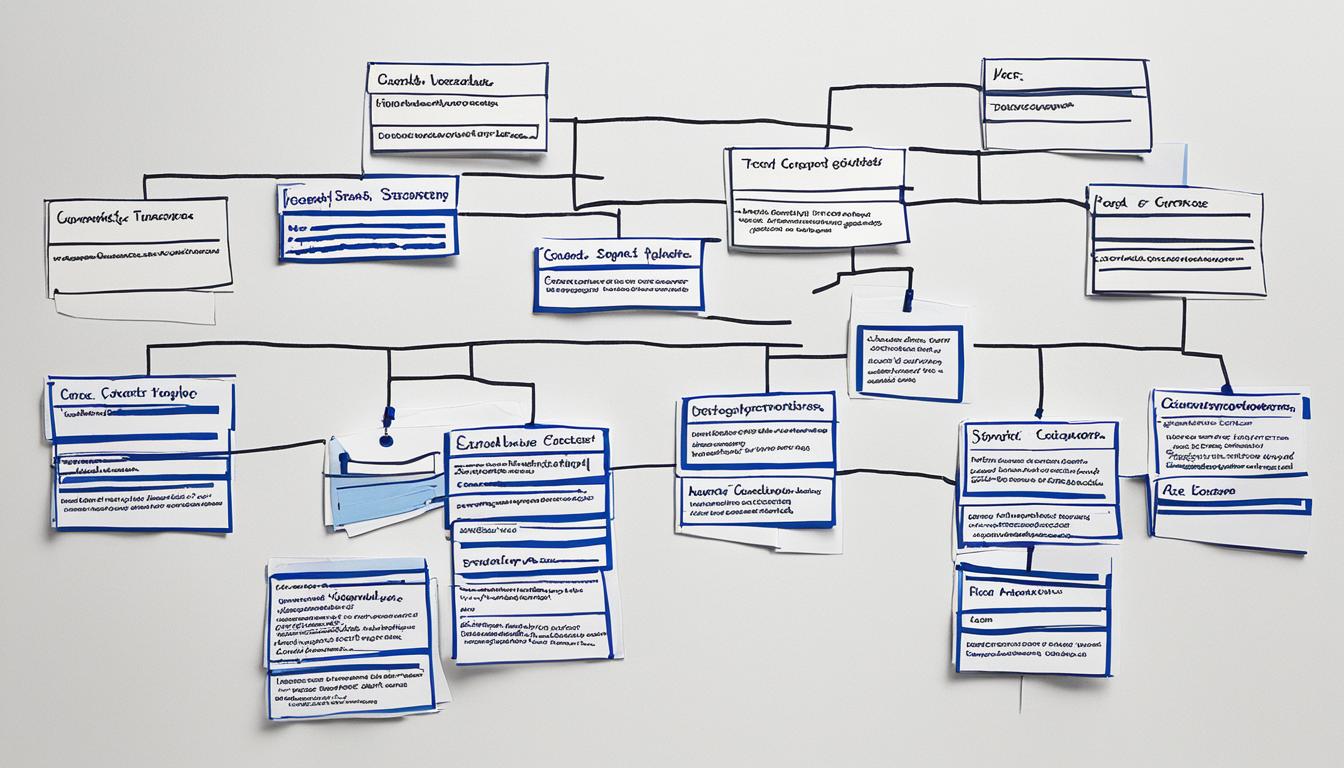Embarking on a project without a roadmap is like setting sail without a compass. In the realm of project management, the Work Breakdown Structure (WBS) serves as that essential guide, offering a structured approach to dissecting complex tasks into manageable components. Let’s delve into what exactly a Work Breakdown Structure is, its significance in project management, and how it shapes the success of your endeavors.
What is Work Breakdown Structure in Project Management?
A work breakdown structure (WBS) is a visual, hierarchical, and deliverable-oriented deconstruction of a project. It allows project managers to break down the project scope into smaller tasks and visualize all the tasks required to complete the project. The WBS chart outlines all the steps of project work, making it an essential project planning tool.
The Work Breakdown Structure (WBS) is a key component in project management. It helps in project planning, project scheduling, resource allocation, and risk management. By breaking down the project into manageable components, the WBS helps avoid common project management issues like missed deadlines, scope creep, and cost overrun.
Project managers use project management software, like ProjectManager, to create and execute WBS effectively.
Why Use a WBS In Project Management?
The use of a work breakdown structure (WBS) in project management is crucial for various reasons. It plays a significant role in project planning, project scheduling, project budgeting, risk management, resource management, task management, and team management. By implementing a WBS, project managers can effectively address common project management challenges and ensure successful project outcomes.
Project planning:
A work breakdown structure helps project managers develop a comprehensive project plan by breaking down the project scope into smaller, manageable tasks. It provides a clear roadmap for project execution and enables project managers to identify the necessary steps to achieve project goals.
Project scheduling:
The WBS assists in creating a project schedule by defining the specific order in which work needs to be completed. Project managers can allocate resources and set realistic timelines for each task, ensuring efficient project progress and timely delivery.
Project budgeting:
With a detailed WBS, project managers can accurately estimate project costs. By breaking down the project into smaller work packages and tasks, they can identify the resources required for each task and allocate the budget accordingly. This enables better financial planning and prevents cost overruns.
Risk management:
The WBS promotes effective risk management by clearly identifying and assessing potential risks at the task level. Project managers can allocate appropriate resources to mitigate risks, ensuring proactive risk mitigation throughout the project lifecycle.
Resource management:
The WBS facilitates resource allocation by providing a visual representation of all project tasks and their dependencies. This allows project managers to identify resource gaps and allocate resources efficiently, ensuring that the right resources are available at the right time.
Task management:
By breaking down the project into smaller work packages and tasks, the WBS enables effective task management. Project managers can assign tasks, set priorities, and track progress, ensuring that each task is completed on time and within budget.
Team management:
The WBS provides clarity on project deliverables, task assignments, and dependencies, making team management more streamlined and organized. Project managers can effectively communicate project requirements and expectations to team members, ensuring collaboration and alignment towards project goals.

By utilizing a work breakdown structure in project management, project managers can avoid common issues such as missed deadlines, scope creep, and cost overrun. The WBS acts as a powerful tool that enhances project planning, scheduling, budgeting, risk management, resource management, task management, and team management, ultimately leading to project success.
How to Create a Work Breakdown Structure In Six Steps?
Creating a work breakdown structure (WBS) is an essential step in project management. It allows you to break down a project into smaller, manageable components, making it easier to plan, execute, and track progress. Follow these six steps to create a comprehensive WBS:
Define the Project Scope, Goals, and Objectives:
Start by clearly outlining the project scope, including its boundaries and objectives. This will help you establish a solid foundation for your WBS.
Identify Project Phases and Control Accounts:
Segment your project into logical phases and define control accounts for each phase. Control accounts serve as task categories for different work areas, ensuring efficient management and accountability.
List all Project Deliverables and Set WBS Levels:
Create a comprehensive list of all the project deliverables, which are the tangible and measurable outcomes of the project. Then, establish WBS levels to define the hierarchy of the WBS elements.
Break Down Deliverables into Work Packages:
Break down each deliverable into smaller work packages. These work packages should be small enough to be assigned to individual team members or departments. This breakdown allows for better resource allocation and task management.
Define Tasks within Work Packages:
Within each work package, define the specific tasks that need to be completed to accomplish the deliverable. These tasks should cover all aspects of the project scope to ensure nothing is overlooked.
Create a Gantt Chart for Scheduling and Tracking:
A Gantt chart is a helpful tool that visually represents the project schedule, showing the start and end dates of each task. It can be created alongside the WBS to provide a comprehensive view of the project timeline and aid in project tracking.

A well-constructed work breakdown structure lays the foundation for successful project management. By following these six steps, you can effectively define the project scope, allocate resources, and track progress towards project milestones.
Types of WBS and WBS Elements
In project management, there are two main types of work breakdown structure (WBS) – deliverable-based WBS and phase-based WBS. Let’s take a closer look at each of these WBS types and the key components that make up a typical WBS.
Deliverable-Based WBS
The deliverable-based WBS breaks down the project into major areas of the project scope, control accounts, project deliverables, and work packages. It organizes the project work based on the final deliverables. This type of WBS is useful when the project can be conveniently divided into independent deliverables.
Phase-Based WBS
The phase-based WBS focuses on breaking down the project into phases, project deliverables, and work packages. It displays the final deliverable on top of the hierarchy and organizes the project work based on the different phases required to complete the project. This type of WBS is beneficial when the project can be divided into well-defined phases.
A typical WBS consists of several key elements:
- WBS Levels: The hierarchy of the WBS, with the final deliverable at the top and the lowest-level tasks at the bottom.
- Control Accounts: Major control points in the WBS, representing specific areas of control and accountability within the project.
- Project Deliverables: The tangible or intangible outcomes of the project, representing the completion of project milestones.
- Work Packages: Groups of related tasks that can be assigned to a specific team or department.
- Tasks: The individual activities required to complete the work packages and ultimately achieve the project goals.

The WBS dictionary is an accompanying document that provides a detailed description of the various WBS elements. It clarifies the terminology used in the work breakdown structure, ensuring a common understanding among project stakeholders.
A well-structured WBS enables project managers to effectively plan, allocate resources, and track progress. It provides a clear roadmap for project execution, ensuring that all project deliverables and tasks are accounted for.
Conclusion
The work breakdown structure (WBS) is an indispensable tool in project management that enables the effective breakdown of complex projects into manageable components. By utilizing the WBS, project managers can streamline project planning, scheduling, resource allocation, and risk management.
The WBS provides project managers with a clear understanding of the project scope, allowing them to define the necessary tasks and allocate resources accordingly. By breaking down the project into smaller work packages, the WBS facilitates efficient project management and helps teams stay on track towards project milestones.
With the WBS in place, project managers can effectively track progress, identify potential bottlenecks, and make informed decisions to ensure project success. The structured nature of the WBS enhances clarity, communication, and collaboration among team members, leading to improved project outcomes.
In summary, the work breakdown structure is an invaluable asset in project management, enabling efficient project planning, scheduling, resource allocation, and scope definition. By utilizing the WBS, project managers can enhance project efficiency, mitigate risks, and achieve successful project completion.
FAQ
What are the steps to create a Work Breakdown Structure (WBS)?
Six steps include defining project scope, identifying phases, listing deliverables, breaking down work packages, defining tasks, and creating a Gantt chart for scheduling and tracking progress.
How does a well-structured WBS benefit Project Management?
It enables effective planning, resource allocation, and progress tracking, providing a clear roadmap for project execution, ensuring accountability and facilitating efficient project management.
What is the significance of a WBS in achieving successful project outcomes?
Utilizing a WBS enhances project efficiency, aids in managing risks, improves communication and collaboration among team members, ultimately leading to successful project completion and desired outcomes.
What role does a WBS play in Risk Management during a project?
The WBS promotes effective risk management by identifying and assessing risks at the task level, allowing project managers to allocate resources for proactive risk mitigation throughout the project lifecycle.
In what ways does a WBS enhance Team Management in project environments?
A WBS provides clarity on project deliverables, task assignments, and dependencies, facilitating streamlined communication, collaboration, and alignment towards project goals among team members
Can a WBS help in preventing common project management issues like scope creep and cost overrun?
Yes, by breaking down the project into manageable components, the WBS allows project managers to define and control the project scope, resources, and costs effectively, thus reducing the likelihood of scope creep and cost overrun.




